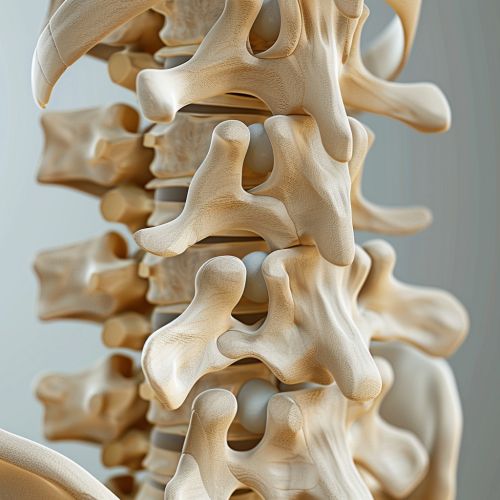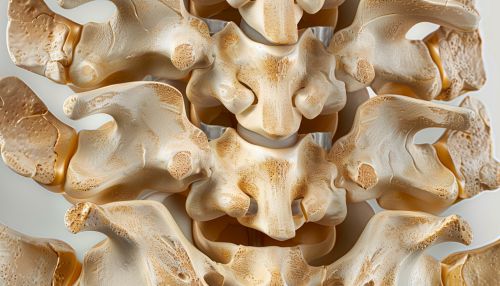Herniated disc
Anatomy and Physiology of the Spine
The human spine, also known as the vertebral column or backbone, is a complex structure made up of individual bones called vertebrae. These vertebrae are stacked one on top of the other, separated by intervertebral discs. These discs act as shock absorbers, preventing the vertebrae from rubbing against each other and allowing for flexibility and movement.


Intervertebral Discs
Intervertebral discs are fibrocartilaginous cushions serving as the spine's shock absorbing system, which protect the vertebrae, brain, and other structures (like nerves). Each disc is made up of two parts: a tough outer layer called the annulus fibrosus, and a soft, gel-like center, the nucleus pulposus.
Herniated Disc
A herniated disc, also known as a slipped disc or disc prolapse, occurs when the nucleus pulposus, the soft inner material of an intervertebral disc, leaks out through a tear in the annulus fibrosus, the disc's tough outer layer. This condition can occur in any part of the spine, but it is most common in the lower back (lumbar spine) and the neck (cervical spine).
Causes of Herniated Disc
The most common cause of a herniated disc is disc degeneration, a natural process that occurs as we age. Other factors that may contribute to the development of a herniated disc include trauma or injury to the spine, repetitive strain or overuse, and genetic factors.
Symptoms of Herniated Disc
The symptoms of a herniated disc can vary depending on the location of the herniation and whether or not the disc material is pressing on a nerve. Common symptoms include pain, numbness, or weakness in the area of the body where the affected nerves travel. For example, a herniated disc in the lower back may cause pain and numbness in the buttock and down the leg. This is often referred to as sciatica.
Diagnosis of Herniated Disc
Diagnosis of a herniated disc begins with a thorough medical history and physical examination. This may be followed by imaging tests, such as X-rays, MRI, or CT scans, to confirm the diagnosis and determine the location and severity of the herniation.
Treatment of Herniated Disc
Treatment for a herniated disc depends on the severity of the symptoms and the patient's overall health. Non-surgical treatments, such as physical therapy, pain medication, and lifestyle modifications, are often effective in relieving symptoms. In more severe cases, surgical intervention may be necessary.
Prognosis of Herniated Disc
The prognosis for a herniated disc is generally good, with most people experiencing significant improvement in their symptoms with conservative treatment. However, some people may continue to experience pain and other symptoms despite treatment, and may require surgery.
